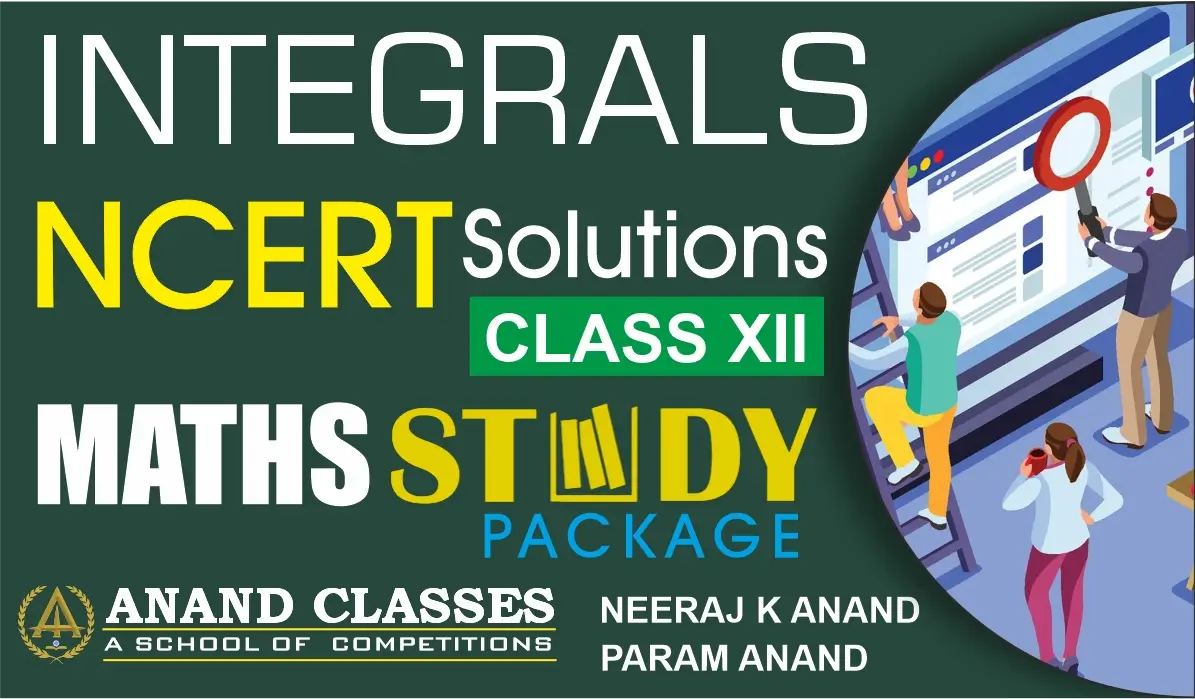Anand Classes presents comprehensive and well-structured Chapter -1 Sets NCERT Solutions Class 11 Maths Exercise 1.3 to help students grasp the key concepts of sets with ease and accuracy. These step-by-step solutions are prepared according to the latest NCERT and CBSE syllabus, ensuring a clear understanding of topics and effective exam preparation. Ideal for self-study and quick revision, these Class 11 Maths Chapter 1 Exercise 1.3 solutions simplify learning and boost confidence. Click the print button to download study material and notes.
NCERT Question 1. Make correct statements by filling in the symbols ⊂ or ⊄ in the blank spaces:
(i) {2, 3, 4} . . . {1, 2, 3, 4, 5}
(ii) {a, b, c} . . . {b, c, d}
(iii) {x : x is a student of Class XI of your school}. . .{x : x student of your school}
(iv) {x: x is a circle in the plane} . . .{x: x is a circle in the same plane with radius 1 unit}
(v) {x : x is a triangle in a plane} . . . {x : x is a rectangle in the plane}
(vi) {x : x is an equilateral triangle in a plane} . . . {x : x is a triangle in the same plane}
(vii) {x : x is an even natural number} . . . {x : x is an integer}
Solution:
(i) {2, 3, 4} ⊂ {1, 2, 3, 4,5}
(ii) {a, b, c} ⊄ {b, c, d}
(iii) {x : x is a student of Class XI of your school} ⊂ {x : x student of your school}
(iv) {x : x is a circle in the plane} ⊄ {x : x is a circle in the same plane with radius 1 unit}
(v) {x : x is a triangle in a plane} ⊄ {x : x is a rectangle in the plane}
(vi) {x : x is an equilateral triangle in a plane} ⊂ {x : x is a triangle in the same plane}
(vii) {x : x is an even natural number} ⊂ {x : x is an integer}
Download notes by Anand Classes — perfect for JEE and CBSE exam preparation.
NCERT Question 2. Examine whether the following statements are true or false:
(i) {a, b} ⊄ {b, c, a}
(ii) {a, e} ⊂ {x : x is a vowel in the English alphabet}
(iii) {1, 2, 3} ⊂ {1, 3, 5}
(iv) {a} ⊂ {a, b, c}
(v) {a} ∈ {a, b, c}
(vi) {x : x is an even natural number less than 6} ⊂ {x : x is a natural number which divides 36}
Solution:
(i) False. Each element of {a, b} is an element of {b, c, a}.
(ii) True. Since a, e are two vowels of the English alphabet.
(iii) False. 2 is subset of {1, 2, 3} but not subset of {1, 3, 5}
(iv) True. Each element of {a} is also an element of {a, b. c} .
(v) False. Elements of {a, b, c} are a, b, c. Hence, {a} ⊂ {a, b, c}
(vi) True
{x : x is an even natural number less than 6} = {2, 4}
{x: x is a natural number which divides 36} = {1, 2, 3, 4, 6, 9, 12, 18, 36}
Hence, {2, 4} ⊂ {1, 2, 3, 4, 6, 9, 12, 18, 36}
Sets NCERT Solutions by Anand Classes Class 11 Maths Exercise 1.3 PDF Free Download
NCERT Question 3. Let A = {1, 2, {3, 4}, 5}. Which of the following statements are incorrect and why?
(i) {3, 4} ⊂ A
(ii) {3, 4} ∈ A
(iii) {{3, 4}} ⊂ A
(iv) 1 ∈ A
(v) 1 ⊂ A
(vi) {1, 2, 5} ⊂ A
(vii) {1, 2, 5} ∈ A
(viii) {1, 2, 3} ⊂ A
(ix) ∅ ∈ A
(x) ∅ ⊂ A
(xi) {∅} ⊂ A
Solution:
Given A= {1, 2, {3, 4}, 5}
(i) {3, 4} ⊂ A is incorrect. Here 3 ∈ {3, 4}, where 3 ∉ A.
(ii) {3, 4} ∈ A is correct. {3, 4} is an element of A.
(iii) {{3, 4}} ⊂ A is correct. {3, 4} ∈ {{3, 4}} and {3, 4} ∈ A.
(iv) 1 ∈ A is correct. 1 is an element of A.
(v) 1 ⊂ A is incorrect. An element of a set can never be a subset of itself.
(vi) {1, 2, 5} ⊂ A is correct. Each element of {1, 2, 5} is also an element of A.
(vii) {1, 2, 5} ∈ A is incorrect. { 1, 2, 5 } is not an element of A.
(viii) {1, 2, 3} ⊂ A is incorrect. 3 ∈ {1, 2, 3}; where, 3 ∉ A.
(ix) ∅ ∈ A is incorrect. ∅ is not an element of A.
(x) ∅ ⊂ A is correct. ∅ is a subset of every set.
(xi) {∅} ⊂ A is incorrect. {∅} is not present in A.
Step-by-step, easy-to-understand solutions by Anand Classes based on the latest NCERT syllabus for effective exam preparation.
NCERT Question 4. Write down all the subsets of the following sets
(i) {a} (ii) {a, b} (iii) {1, 2, 3} (iv) ∅
Solution:
(i) Subsets of {a} are ∅ and {a}.
(ii) Subsets of {a, b} are {a}, {b}, and {a, b}.
(iii) Subsets of {1, 2, 3} are ∅, {1}, {2}, {3}, {1, 2}, {2, 3}, {1, 3}, and {1, 2, 3}.
(iv) Only subset of ∅ is ∅.
Class 11 Maths Sets Chapter Exercise 1.3 Solutions by Anand Classes
NCERT Question 5. Write the following as intervals:
(i) {x : x ∈ R, – 4 < x ≤ 6} (ii) {x : x ∈ R, – 12 < x < –10}
(iii) {x : x ∈ R, 0 ≤ x < 7} (iv) {x : x ∈ R, 3 ≤ x ≤ 4}
Solution:
(i) {x : x ∈ R, – 4 < x ≤ 6} = (-4, 6]
(ii) {x : x ∈ R, – 12 < x < –10} = (-12, -10)
(iii) {x : x ∈ R, 0 ≤ x < 7} = [0, 7)
(iv) {x : x ∈ R, 3 ≤ x ≤ 4} = [3, 4]
Class 11 Sets Exercise 1.3 PDF Download, NCERT Class 11 Maths Chapter 1 Solutions
NCERT Question 6. Write the following intervals in set-builder form :
(i) (– 3, 0) (ii) [6, 12] (iii) (6, 12] (iv) [–23, 5)
Solution:
(i) (– 3, 0) = {x : x ∈ R, -3 < x < 0}
(ii) [6, 12] = {x : x ∈ R, 6 ≤ x ≤ 12}
(iii) (6, 12] = {x : x ∈ R, 6 < x ≤ 12}
(iv) [–23, 5) = {x : x ∈ R, -23 ≤ x < 5}
Class 11 Maths Chapter 1 Sets Exercise 1.3 Solutions by Anand Classes.
NCERT Question 7. What universal set(s) would you propose for each of the following :
(i) The set of right triangles
(ii) The set of isosceles triangles.
Solution:
(i) The universal set for the set of right triangles is the set of triangles or the set of polygons.
(ii) The universal set for the set of isosceles triangles is the set of triangles or the set of polygons or the set of two-dimensional figures.
NCERT Question 8. Given the sets A = {1, 3, 5}, B = {2, 4, 6} and C = {0, 2, 4, 6, 8}, which of the following may be considered as universal set (s) for all the three sets A, B and C
(i) {0, 1, 2, 3, 4, 5, 6}
(ii) ∅
(iii) {0, 1, 2, 3, 4, 5, 6, 7, 8, 9, 10}
(iv) {1, 2, 3, 4, 5, 6, 7, 8}
Solution:
(i) A ⊂ {0, 1, 2, 3, 4, 5, 6}
B ⊂ {0, 1, 2, 3, 4, 5, 6}
But, C ⊄ {0, 1, 2, 3, 4, 5, 6}
Hence, the set {0, 1, 2, 3, 4, 5, 6} cannot be the universal set for the sets A, B, and C.
(ii) A ⊄ ∅, B ⊄ ∅, C ⊄ ∅
Hence, ∅ cannot be the universal set for the sets A, B, and C.
(iii) A ⊂ {0, 1, 2, 3, 4, 5, 6, 7, 8, 9, 10}
B ⊂ {0, 1, 2, 3, 4, 5, 6, 7, 8, 9, 10}
C ⊂ {0, 1, 2, 3, 4, 5, 6, 7, 8, 9, 10}
Hence, the set {0, 1, 2, 3, 4, 5, 6, 7, 8, 9, 10} is the universal set for the sets A, B, and C.
(iv) A ⊂ {1, 2, 3, 4, 5, 6, 7, 8}
B ⊂ {1, 2, 3, 4, 5, 6, 7, 8}
But, C ⊄ {1, 2, 3, 4, 5, 6, 7, 8}
Hence, the set {1, 2, 3, 4, 5, 6, 7, 8} cannot be the universal set for the sets A, B, and C.
NCERT Question 9. How many elements has P(A), if A = ∅?
Solution:
For a set A with n(A) = m, then it can be shown that
Number of elements of P(A) = n[P(A)] = 2m
If A = ∅, we get n (A) = 0
So, n[P(A)] = 2° = 1
Therefore, P(A) has one element.


